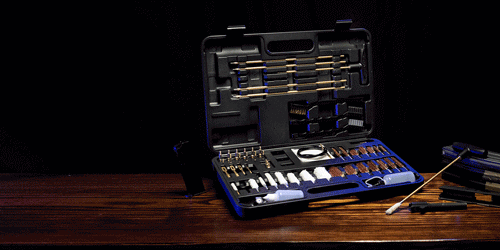Foreword
A tactical vest is an essential piece of gear for anyone involved in outdoor operations, hunting, shooting, or emergency preparedness. Setting up your vest properly ensures that you can carry all the necessary equipment while maintaining comfort and mobility. Whether you’re new to tactical gear or looking to optimize your existing setup, this guide will walk you through the process of setting up your tactical vest for maximum efficiency.
1. Choose the Right Tactical Vest
Before you begin, it's crucial to select the right vest for your needs. There are different types of tactical vests designed for various purposes, such as hunting, law enforcement, military, and airsoft. Make sure your vest is the right fit and has enough MOLLE (Modular Lightweight Load-carrying Equipment) webbing for customization.
Key things to look for:
- Adjustability: The vest should have adjustable straps and buckles for a snug and comfortable fit.
- Weight: Choose a lightweight vest if you need to move quickly, or a heavier-duty one for carrying more equipment.
- Pockets and Compartments: Ensure there’s enough storage for the gear you need to carry.

2. Prepare Your Gear
To set up your vest efficiently, gather all the items you plan to carry. The gear you'll need will depend on your activity, but typical items include:
- Ammunition Magazines: For shooters, you’ll want to carry spare magazines. Choose pouches that fit your magazine size.
- First Aid Kit: A compact first aid kit can be life-saving in emergencies.
- Utility Pouches: These are used for carrying tools, flashlights, maps, or other small gear.
- Radio Pouch: If you’ll be using communication devices, a radio pouch is essential.
- Hydration System: A hydration pack or water bottle pouch will keep you hydrated during long operations.
- Multitool or Knife: A versatile tool is always handy when in the field.
3. Attach MOLLE Pouches and Accessories
Most modern tactical vests feature MOLLE webbing, allowing you to customize your loadout by attaching various pouches and accessories. Here’s how to do it:
- Start with the Essentials: Attach pouches for magazines, a first aid kit, and your radio at locations that are easily accessible. The idea is to keep high-priority gear within reach.
- Layer and Organize: Attach larger items like a hydration pack or utility pouches to the back or sides of the vest for balance. This ensures that the vest’s weight is evenly distributed, preventing discomfort during long-term wear.
- Use the Bottom and Upper Straps: Utilize the lower MOLLE straps for lighter accessories or tools that you don’t need as frequently. Use the upper straps for more essential items like a multitool, knife, or flashlight.

4. Adjust the Straps for Comfort
Once you’ve attached all your pouches, it’s time to adjust the straps for a secure and comfortable fit. Here’s what you should do:
- Shoulder Straps: Adjust the shoulder straps so the vest rests comfortably on your shoulders without restricting movement. Make sure the vest doesn't ride up or shift around.
- Chest and Waist Straps: Tighten the chest and waist straps so the vest stays in place and doesn’t shift while you’re moving. You want the vest to be snug but not too tight to avoid restricting breathing or movement.
- Test the Fit: Put on the vest and test its fit by simulating movements like crouching, bending, and walking. The vest should allow free movement without shifting or chafing.
5. Test for Accessibility and Balance
After adjusting the straps and attaching your pouches, it’s important to test the accessibility and balance of your gear:
- Reachability: Ensure that items like your magazines, multitools, or radios are within easy reach without having to take the vest off.
- Weight Distribution: A good tactical vest should evenly distribute the weight of your gear. You don’t want too much weight on one side, as this can lead to discomfort or poor posture. Rebalance the vest if necessary by moving pouches around.
6. Pack for the Mission
When setting up your vest, always remember to pack based on the mission or activity you’re undertaking. Here’s a general breakdown for different scenarios:
- For Hunting: Focus on pouches for ammunition, first aid, a hydration pack, and a knife or multi-tool. You may also want to carry a GPS or map in a pocket for navigation.
- For Shooting: In addition to ammunition, consider a pouch for ear protection, seatbelt, or extra accessories like binoculars.
- For Emergency Preparedness: Carry medical supplies, a flashlight, a multi-tool, and a fire-starting kit. You may also want a communication device and a small survival kit.

7. Check for Comfort and Functionality
Once everything is set up, wear the vest for a while to make sure it’s comfortable and functional. Keep an eye on the following:
- Mobility: You should be able to move freely without the vest feeling restrictive. If it’s too tight, loosen the straps; if it’s too loose, tighten them.
- Durability: Check that all the attachments and straps are secure, as improperly attached pouches can shift during movement, causing discomfort or reducing efficiency.
- Accessibility: Ensure that you can reach your gear quickly and without difficulty. This is especially important in high-stress situations.
8. Ongoing Maintenance and Adjustments
Your tactical vest setup isn’t permanent—over time, you may need to make adjustments based on your experience or changing mission needs. After each use:
- Inspect the Vest: Check for wear and tear, especially on the MOLLE straps, pouches, and buckles.
- Reorganize Gear: If you find certain items aren’t as accessible or useful as you thought, swap out or reposition them.
- Upgrade Components: As you acquire new gear, consider upgrading your pouches or accessories to meet your evolving needs.
Conclusion
Setting up your tactical vest is a crucial step in preparing for any mission, whether it's a hunting trip, shooting competition, or emergency situation. By choosing the right vest, organizing your gear, and ensuring a proper fit, you can maximize the functionality and comfort of your tactical gear. Regularly assess and adjust your setup as your needs change, and you'll be ready for any operation that comes your way.
Shop the Gloryfire Upgraded NIR-Compliant Tactical Vest Today!






